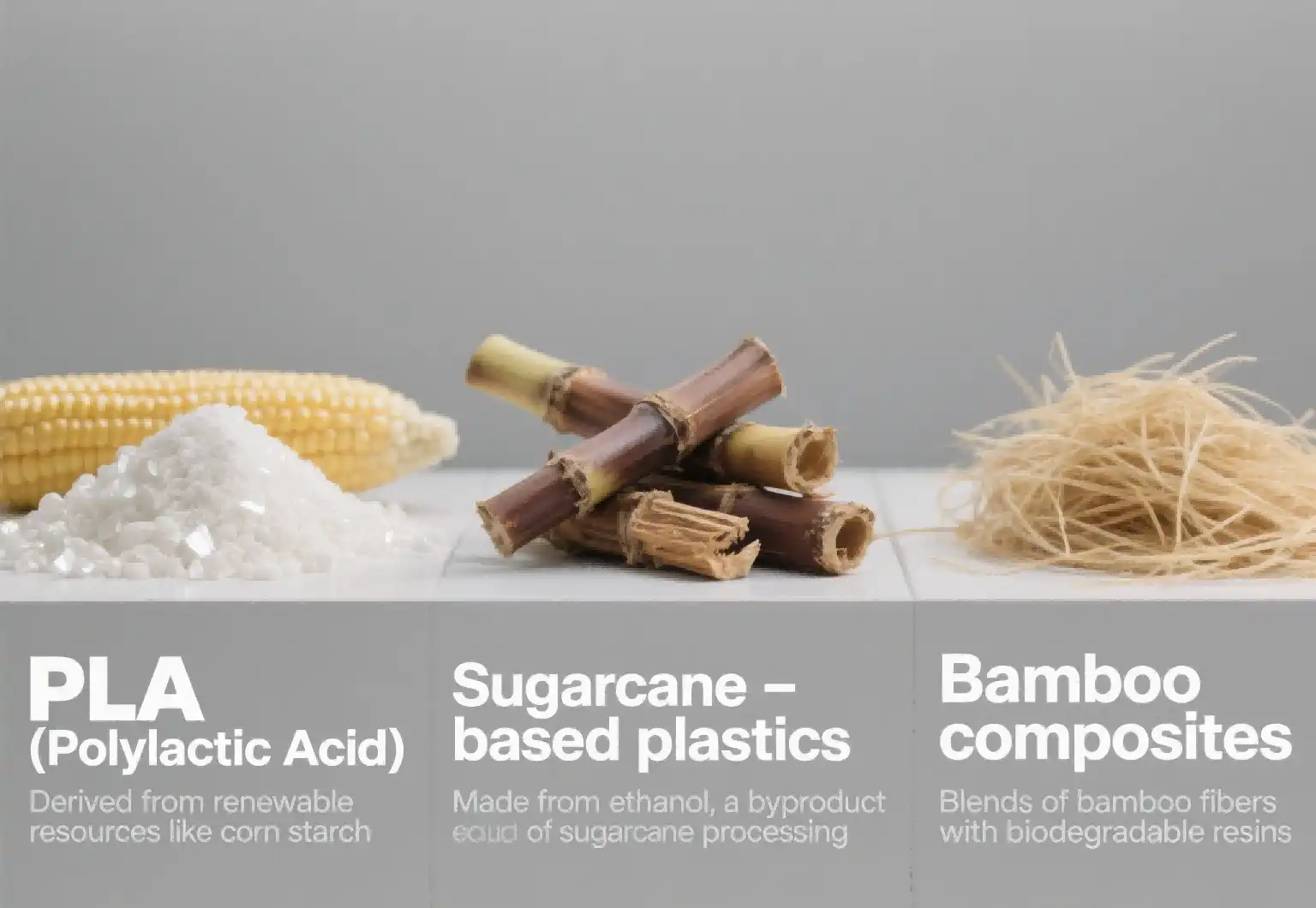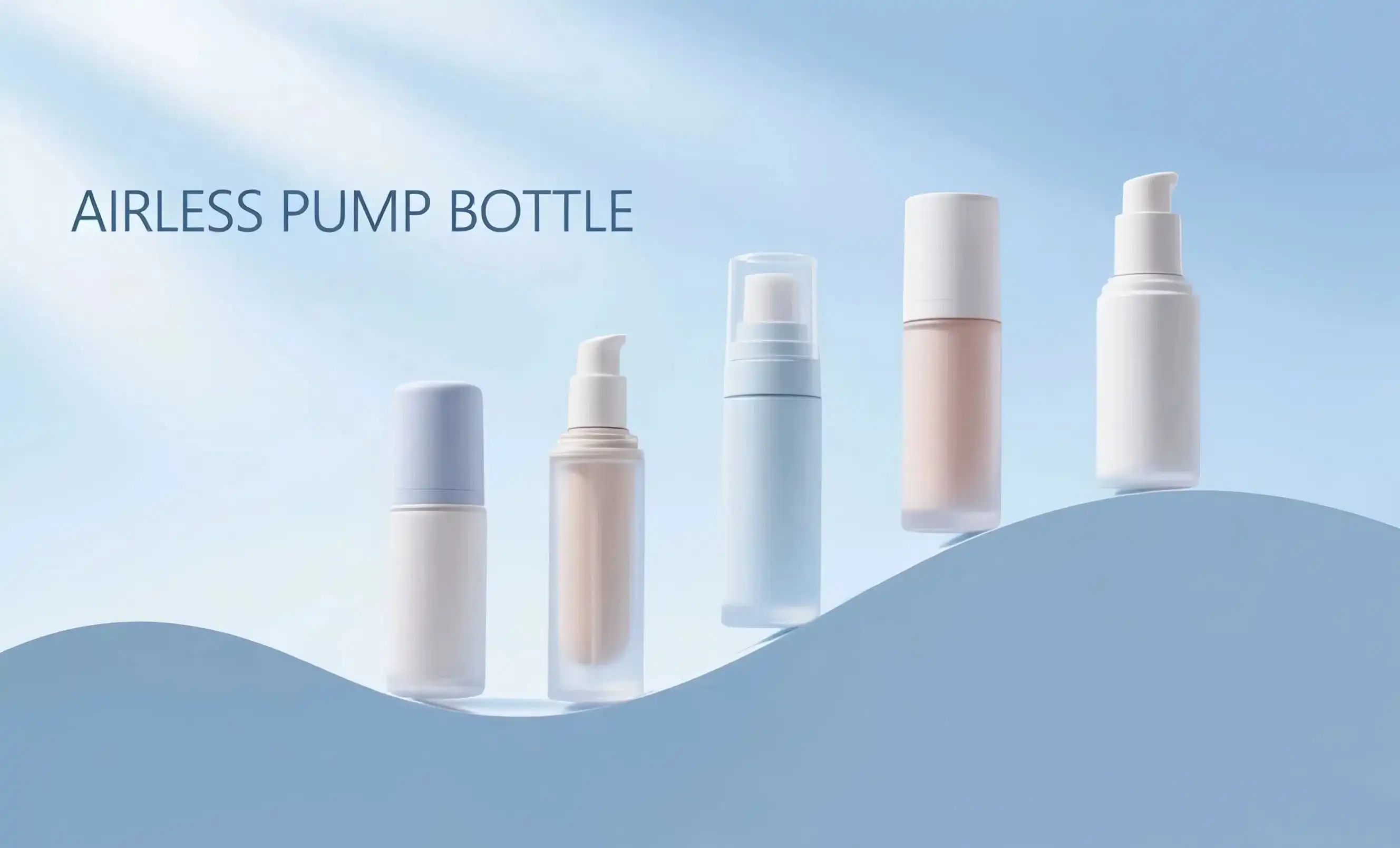What's the Best Lotion Bottle Material? Plastic, Glass, or Aluminum?
When it comes to choosing the best material for lotion bottles, there's no one-size-fits-all answer. Each material has its unique properties that make it suitable for different applications:
Plastic Lotion Bottles
Plastic remains a popular choice for many brands due to its versatility and cost-effectiveness. High-density polyethylene (HDPE) and polyethylene terephthalate (PET) are commonly used for lotion packaging. Plastic cosmetic bottles are lightweight, shatter-resistant, and can be easily molded into various shapes and sizes. They're also recyclable, although the recycling rates vary depending on local facilities.
Advantages of plastic lotion bottles:
- Lightweight and durable
- Cost-effective for large-scale production
- Versatile in design and customization
- Suitable for travel-friendly packaging
However, plastic has faced criticism for its environmental impact, leading to increased demand for recycled and recyclable plastic options.

Glass Lotion Bottles
Glass bottles offer a premium look and feel, making them popular for high-end lotions and creams. They're non-reactive, preserving the integrity of the product, and are highly recyclable.
Benefits of glass lotion containers:
- Luxurious appearance
- Excellent product preservation
- 100% recyclable and can be recycled indefinitely
- Impermeable to oxygen, maintaining product freshness
The main drawbacks of glass are its weight and fragility, which can increase shipping costs and breakage risk.
Aluminum Lotion Bottles
Aluminum is gaining popularity as a sustainable alternative to plastic. It's lightweight, recyclable, and provides excellent protection against light and air.
Advantages of aluminum lotion packaging:
- Lightweight yet durable
- Infinitely recyclable without loss of quality
- Provides a barrier against light and oxygen
- Modern, sleek appearance
The primary disadvantage of aluminum is its higher cost compared to plastic, which can be a consideration for brands with tight budgets.
Lotion Bottle Materials Guide: Safety, Sustainability & Compatibility
When selecting materials for lotion bottles, it's crucial to consider safety, sustainability, and compatibility with the product. These factors not only affect the quality of the lotion but also impact consumer trust and brand reputation.
Safety Considerations
The safety of packaging materials is paramount in the cosmetics industry. Materials must comply with regulatory standards such as EU REACH, FDA regulations, and California's Proposition 65. Key safety aspects include:
- Chemical inertness: The material should not react with the lotion or leach harmful substances.
- BPA-free options: Many consumers prefer BPA-free packaging for health reasons.
- Tamper-evident features: Some materials can be more easily equipped with tamper-evident seals.
Sustainability Factors
With growing environmental concerns, sustainability has become a major factor in packaging decisions. Sustainable options include:
- Recycled materials: Post-consumer recycled (PCR) plastics are increasingly popular.
- Recyclability: Materials that are widely accepted by recycling programs.
- Biodegradable options: Emerging materials that can decompose naturally.
- Energy efficiency: Consider the energy required to produce and recycle the material.
Product Compatibility
The chosen material must be compatible with the lotion formulation to ensure product integrity and shelf life. Considerations include:
- Barrier properties: Protection against air, light, and moisture.
- Chemical resistance: Ability to withstand ingredients without degradation.
- Viscosity compatibility: Suitability for different product consistencies.
For instance, airless bottles are excellent for preserving sensitive formulations by preventing air exposure. These advanced packaging solutions maintain product effectiveness and extend shelf life, making them ideal for high-end skincare products.
Eco-Friendly Lotion Bottle Choices: Biodegradable vs. Recyclable Options
As the demand for sustainable packaging grows, brands are exploring eco-friendly alternatives for lotion bottles. Two major categories have emerged: biodegradable and recyclable options. Understanding the differences and benefits of each can help brands make informed decisions aligned with their sustainability goals.
Biodegradable Lotion Bottles
Biodegradable materials are designed to break down naturally in the environment, reducing long-term waste. Some options include:
- PLA (Polylactic Acid): Derived from renewable resources like corn starch.
- Sugarcane-based plastics: Made from ethanol, a byproduct of sugarcane processing.
- Bamboo composites: Blends of bamboo fibers with biodegradable resins.

Advantages of biodegradable options:
- Reduced environmental impact if disposed of properly
- Made from renewable resources
- Can help brands appeal to eco-conscious consumers
However, biodegradable materials often require specific conditions to decompose effectively, which may not be available in all disposal environments.
Recyclable Lotion Bottles
Recyclable materials can be processed and reused, conserving resources and reducing waste. Common recyclable options for lotion packaging include:
- PET and HDPE plastics: Widely accepted in recycling programs
- Glass: Infinitely recyclable without loss of quality
- Aluminum: Highly recyclable and retains value
Benefits of recyclable packaging:
- Supports circular economy principles
- Often more readily available and cost-effective than biodegradable options
- Can be made from recycled content, further reducing environmental impact
The effectiveness of recyclable packaging depends on consumer participation and the availability of recycling facilities.
Making the Right Choice
When deciding between biodegradable and recyclable options for lotion bottles, consider:
- Target market preferences and behaviors
- Local waste management infrastructure
- Overall lifecycle impact of the material
- Brand sustainability goals and messaging
Some brands are opting for hybrid approaches, such as using recyclable materials with biodegradable components, to maximize environmental benefits.
Innovation in Eco-Friendly Packaging
The packaging industry continues to innovate, developing new materials and technologies to improve sustainability. Some emerging trends include:
- Ocean-bound plastic: Recycled plastic collected from coastal areas at risk of entering the ocean.
- Refillable systems: Durable outer packaging with recyclable or biodegradable refill pouches.
- Mono-material designs: Packaging made entirely of one material to improve recyclability.
These innovations offer exciting possibilities for brands looking to reduce their environmental footprint while still providing high-quality lotion bottles.
Conclusion
Choosing the right material for lotion bottles is a complex decision that involves balancing various factors including product protection, sustainability, brand image, and regulatory compliance. Whether opting for traditional materials like plastic and glass or exploring innovative eco-friendly options, it's crucial to consider the entire lifecycle of the packaging and its impact on both the product and the environment.
For brands seeking to make informed decisions about their lotion bottle packaging, partnering with experienced packaging suppliers can provide valuable insights and access to cutting-edge solutions. At Topfeelpack, we specialize in advanced airless bottles designed to prevent air exposure, maintaining product effectiveness and ensuring longer shelf life. Our commitment to sustainability, fast customization capabilities, competitive pricing, and quick delivery make us an ideal partner for brands looking to optimize their lotion packaging.
Are you ready to elevate your lotion packaging? Whether you're a high-end skincare brand, a trendy makeup line, or a DTC beauty company, Topfeelpack has the expertise and solutions to meet your needs. From sustainable materials to custom designs, we can help you create packaging that not only protects your product but also enhances your brand identity. Contact us today at pack@topfeelgroup.com to explore how our innovative lotion bottle solutions can benefit your brand.
References
- Johnson, A. (2022). "Sustainable Packaging Materials for Personal Care Products: A Comprehensive Review." Journal of Cosmetic Science, 73(4), 215-230.
- Smith, B. et al. (2023). "Consumer Perceptions of Eco-Friendly Packaging in the Beauty Industry." International Journal of Consumer Studies, 47(2), 301-315.
- Garcia, M. (2021). "Innovations in Biodegradable Plastics for Cosmetic Packaging." Packaging Technology and Science, 34(5), 267-280.
- Brown, L. (2023). "The Impact of Packaging Material on Product Shelf Life in Skincare." Journal of Cosmetic Dermatology, 22(3), 456-470.
- Lee, K. and Park, J. (2022). "Comparative Life Cycle Assessment of Glass, Plastic, and Aluminum Containers in the Personal Care Industry." Resources, Conservation and Recycling, 168, 105317.
- Wilson, E. (2023). "Regulatory Compliance and Safety Standards for Cosmetic Packaging Materials: A Global Perspective." Regulatory Toxicology and Pharmacology, 131, 105155.

 - 副本_1745399213966.webp)

_1747827716538.webp)

